Step 4: How to build and run your project
This step will show you how to compile and run your Java program
in Eclipse. Be sure to read the whole document!
Before you begin, make sure the text in your editor window is
exactly the same as the text in the previous step.
- Go to the left Package Explorer pane. The HelloWorld
folder should be opened, but if it is not, double-click on folder to open it.
Then, double click on the
"(default package)" to
access the HelloWorld.java file. Right-click on the file and
select Run As → Java Application, as in the following image:
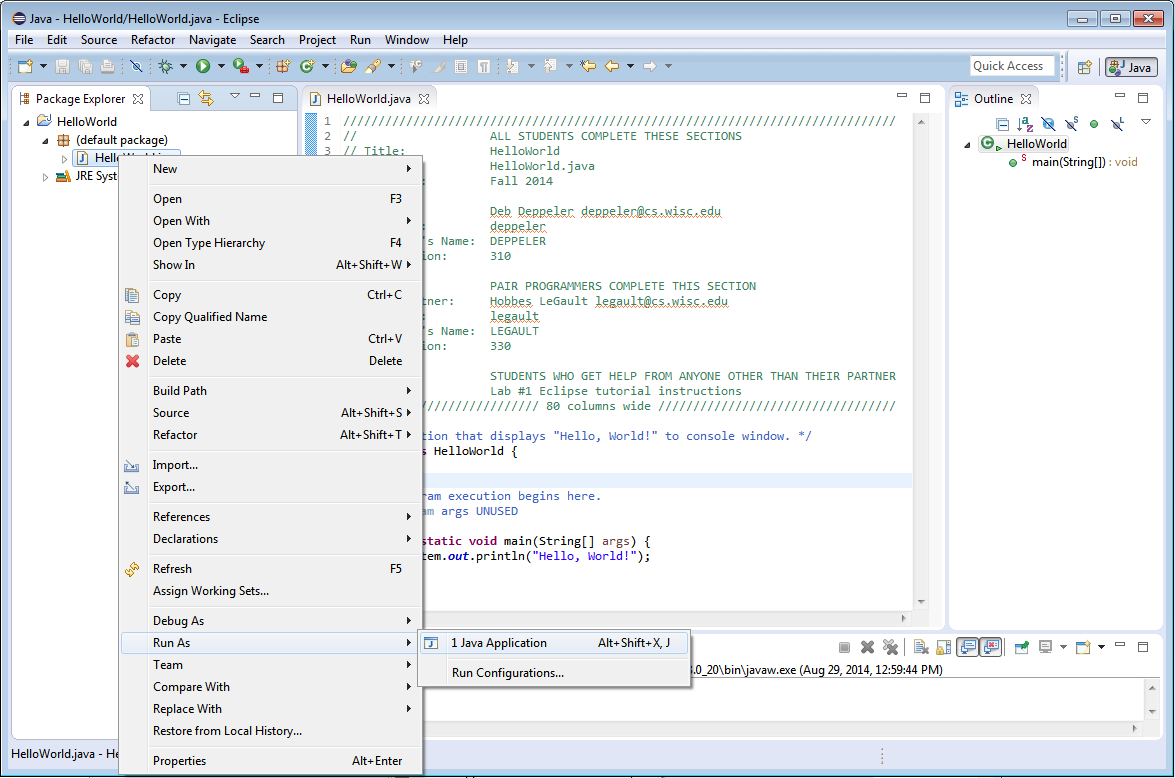
Once you run the HelloWorld program, you should notice
output in the Console pane:
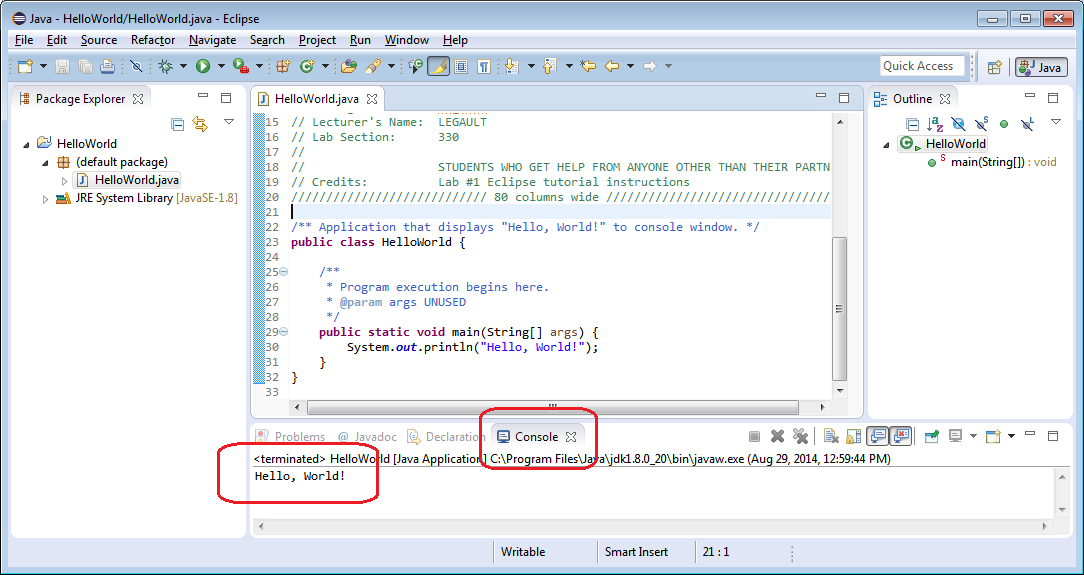
Note that you may have to click on the
tab labeled "Console" to see this output.
Now we will do one more project, which
demonstrates the adding of a jar file. If you are working in a group, make sure
to pass the keyboard to a different member of the group.
FortuneTeller
- Create a new project as you did in Step 2. Call it "FortuneTeller".
However, instead of clicking Finish immediately in part 2 of Step 2,
click the Next button. The following should be displayed:
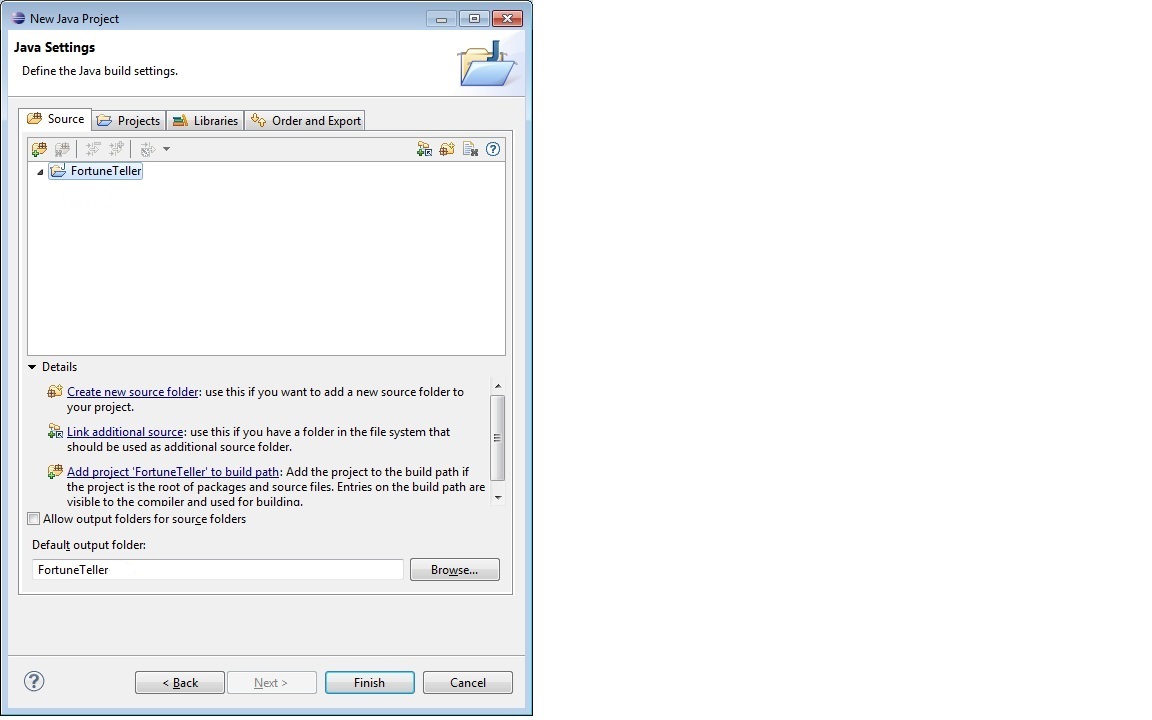
- Click on the "Libraries" tab and the following should be
displayed:
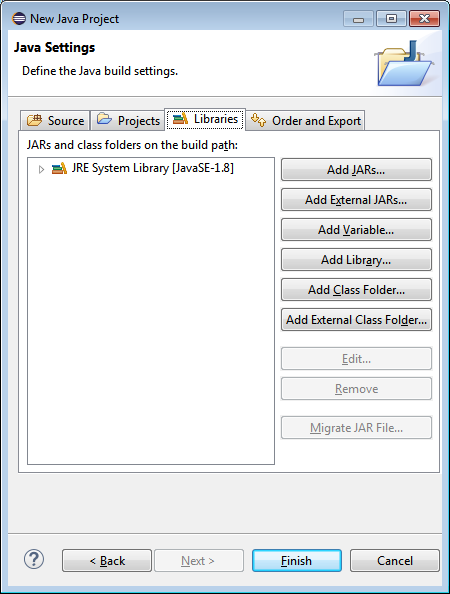
- Click the "Add External JARs" button.
If you are working on a CSL computer (that is, one of the computers in the CS department lab rooms), type
the following path into the file chooser dialog that you get:
P:\course\cs302\public\html\labs\EclipseTutorial\fortune.jar
You can copy and paste this from the webpage. Then click Finish.
If you are working on your own computer, then you won't be able to access the P: drive.
Instead, download the fortune.jar file,
save it on your computer,
and navigate to the saved file in the file chooser dialog.
- When you have successfully added the
fortune.jar library as shown here, click Finish.
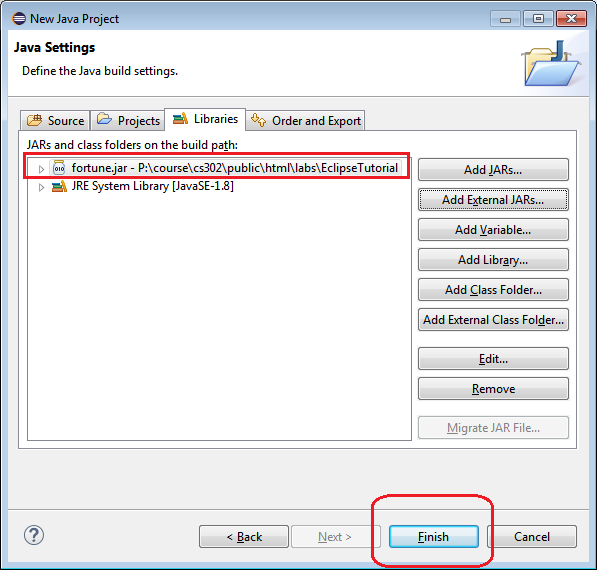
Note: If a red ! appears on the
FortuneTeller folder that's created, this means that you have
incorrectly entered the text above. If this is the case, you'll need to
do the next steps to fix it:
- Edit the link so that it is correct in the following way:
Right-click on the FortuneTeller folder in Package Explorer and
choose Properties:
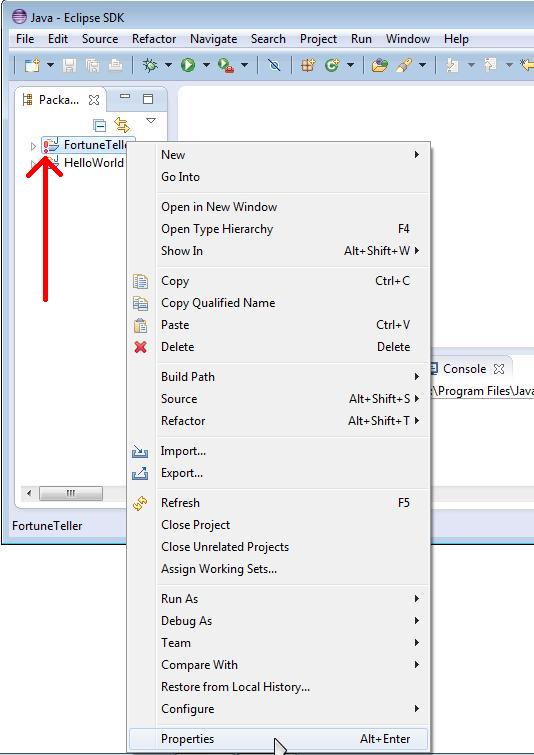
The following window will appear:
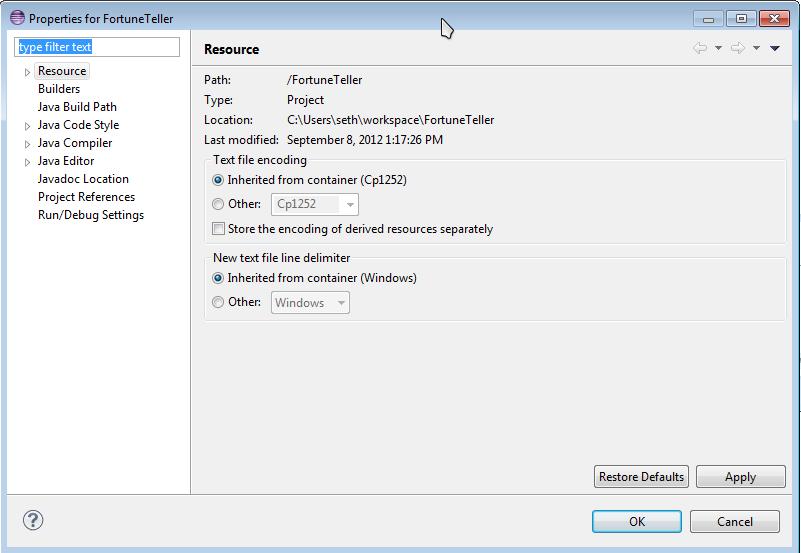
- Click on the "Java Build Path" option on the left hand side,
resulting in the following window:
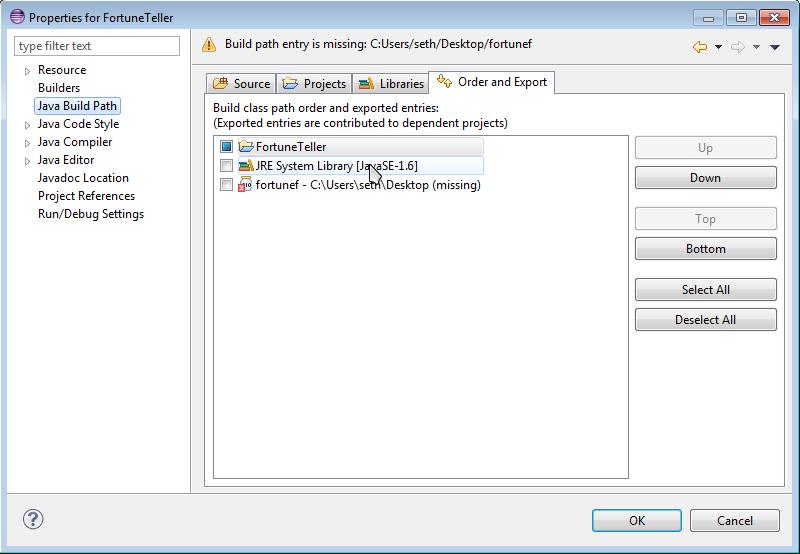
You may have an error message with a red
x,
but the exact text for your message will differ.
- If you do have the red x,
click on the tab labeled "Libraries",
resulting in the following window:
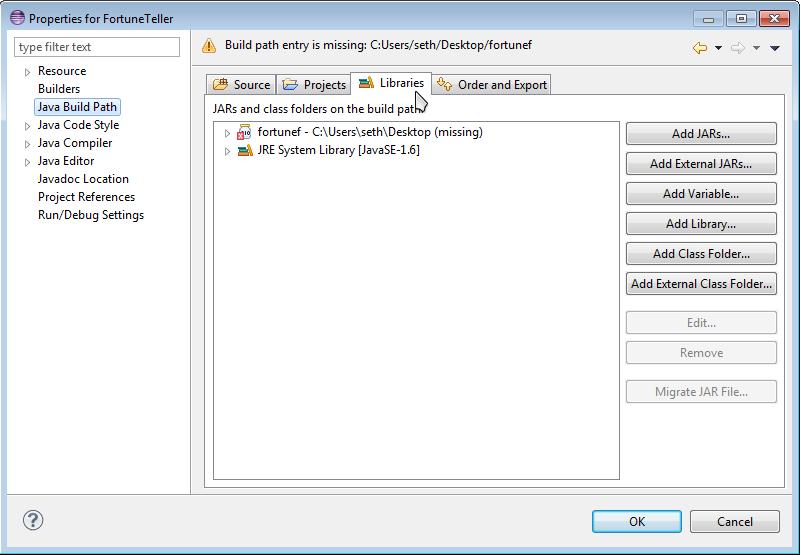
- Select the picture of the jar with the X
and click
the button labeled "Edit...", then try copying and pasting the above
text (reminder:
P:\course\cs302\public\html\labs\EclipseTutorial\fortune.jar)
and click OPEN.
- The X should disappear. If not, try clicking the
"Edit..." button and trying again. Don't proceed until the X
disappears. If it doesn't work after a few tries,
ask your instructor or a consultant for help.
- Click OK and the red X should disappear. If it did not, return to
step a. above or ask your instructor or a consultant for help.
- Now create a new class in the FortuneTeller project called
FortuneTeller, and edit it so that it looks like the
following:
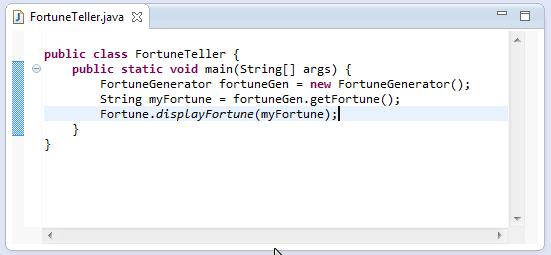
- Add the file header comment, class comment, and method header comment; as you did with HelloWorld.
- Run the file as you did with HelloWorld (right-click and choose
Run) and the following dialog box should appear (with a random fortune):

- There is a shortcut icon in the Eclipse toolbar for running the current file as an application. Click the "Run FortuneTeller" "play" icon.
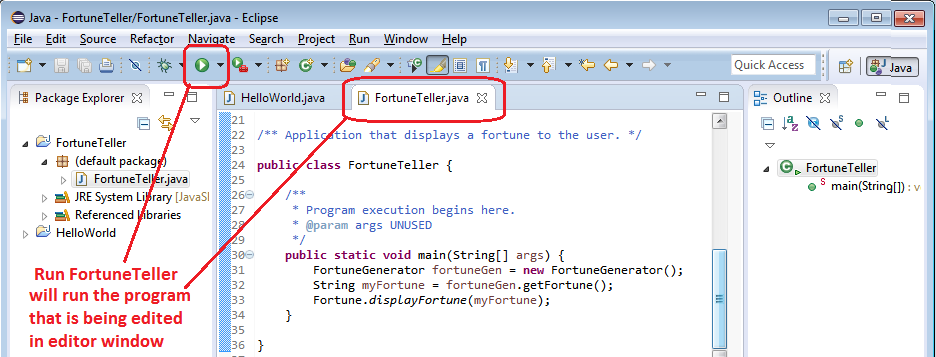
A last important note is that for most of your projects, you'll have
more than one file that you edit. You can add more than one file to a
given project the same way you added the first file to each project.
However, each project will produce only one program. The different
files will allow you to organize yourself in an object-oriented way.
Since we made two different little programs here, we made a project
for each one.
Original version created by Deb Deppeler and Sue Hazlett
Updated for Eclipse by Martin Hock
Updated for lab section use by Beck Hasti
2008-2012 Updated by Jim Skrentny
2014 Updated for v4.4 and added Editor Preferences by Deb Deppeler











